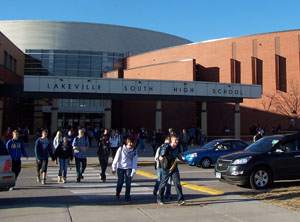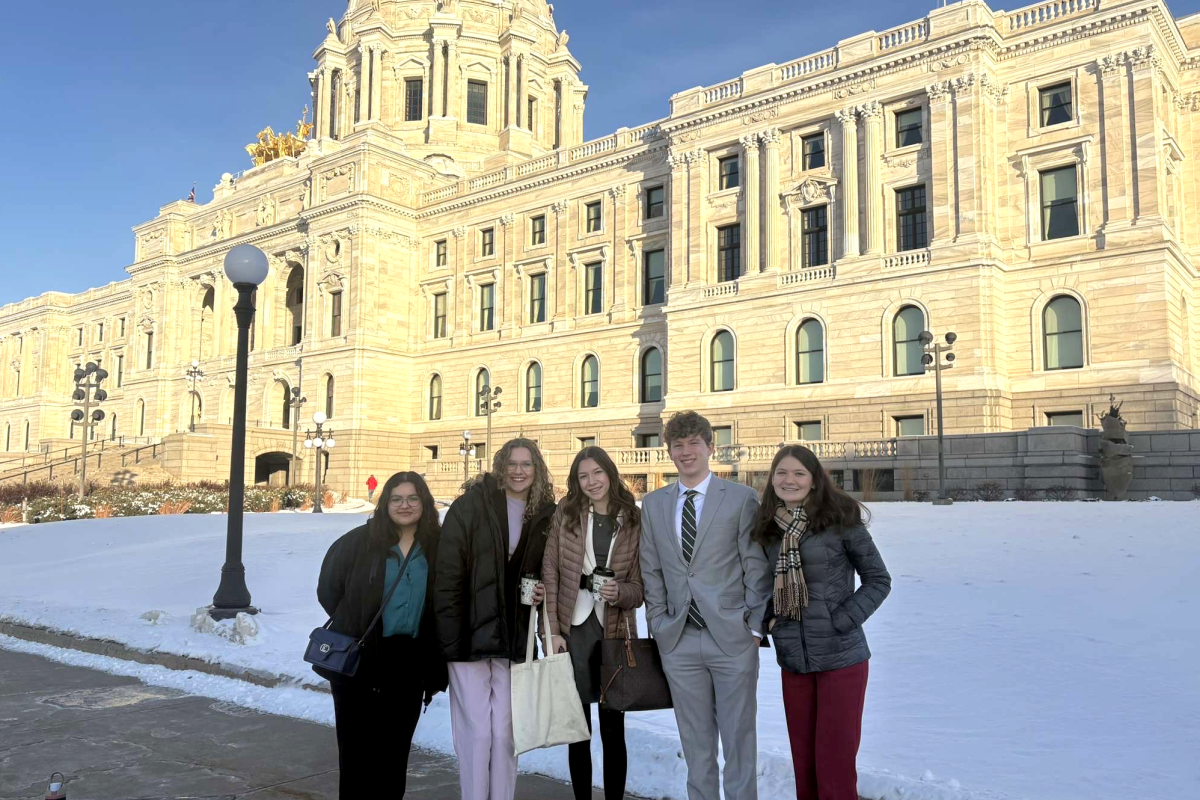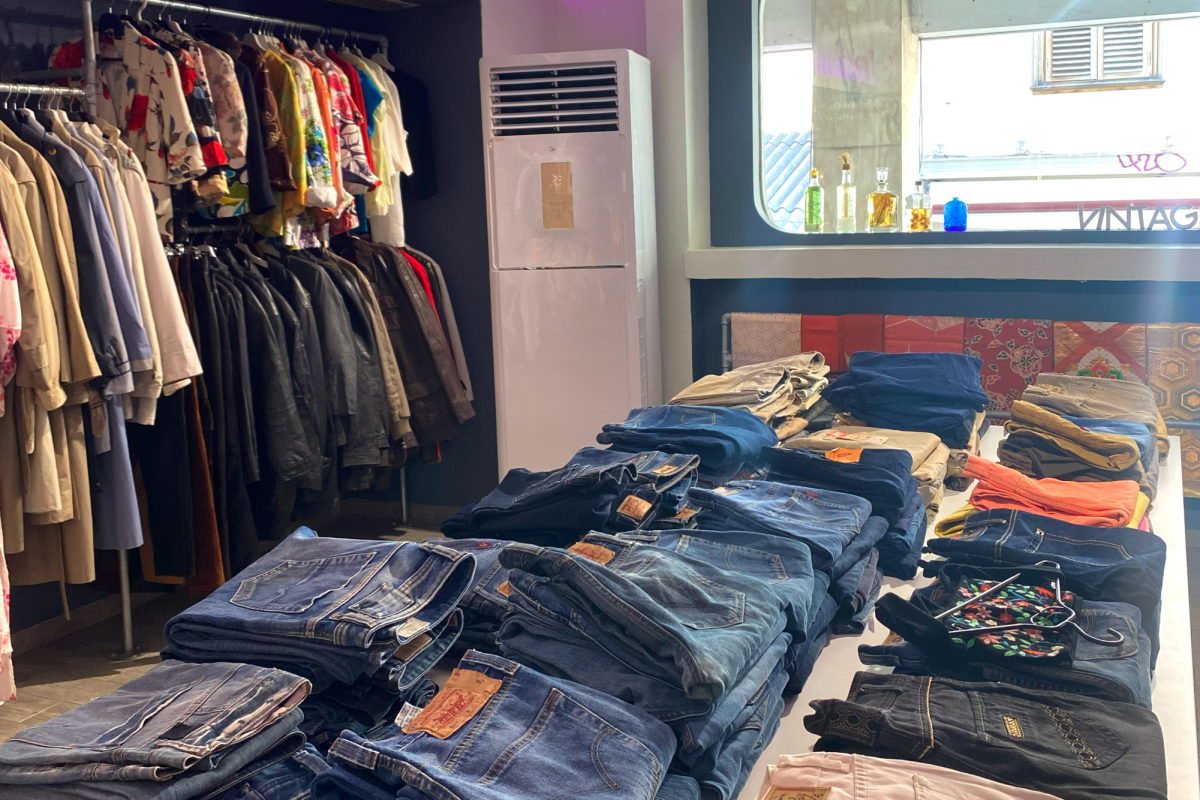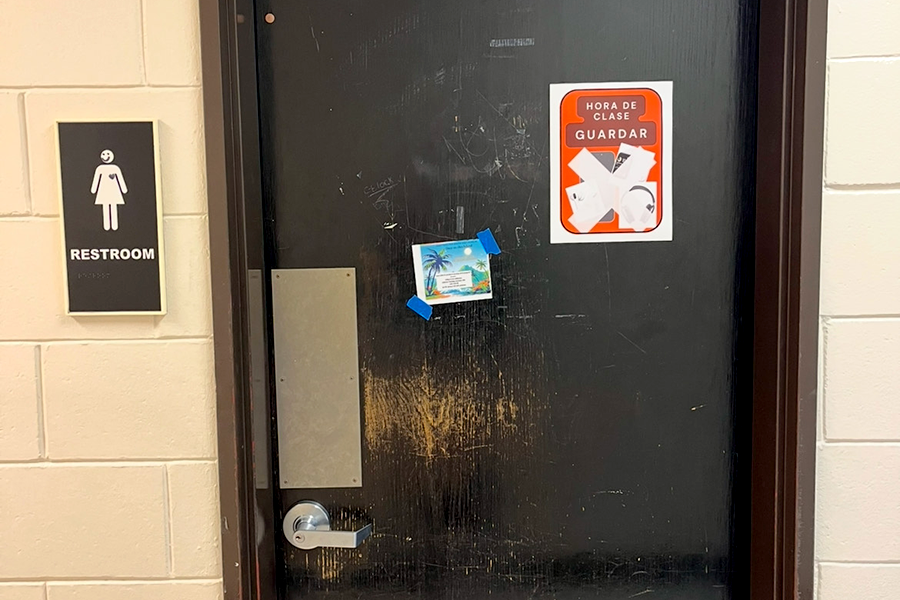Most South students don’t encounter 70 mph speed limits on their way to school each day. Nor do we have a parking lot that’s big enough to necessitate stop signs. These were just a few of the foreign things I encountered as I found my way to Lakeville South High School for a day of living as a suburban high school student.
After I parked, I had plenty of time to get nervous as I walked from the back of the parking lot to the front doors of the school. Having always attended school in the Minneapolis Public School district, I had no idea what it was going to be like in suburbia. The picture I had in my head was something of a cross between “Mean Girls” and “Ferris Bueller’s Day Off.”
From the outside, it may look like the high school one might encounter in such a movie. Lakeville South was built in 2005. The brown building is three stories tall, and sports an impressive number of windows from the perspective of a South student. The entrance is in the center cylindrical shaped part of the building flanked by two wings for classrooms, gyms, and an auditorium. There isn’t any graffiti or a single stain from a power washer. The entrance is a line of glass doors. It looks more like the entrance to a mall than the high school I’m used to.
As I entered the building, nobody requested to see my ID. Rather, I headed to the welcome desk and was greeted with a warm smile. I signed in, received a visitor’s pass, and waited by the metal statue of a cougar (the school’s mascot) tucked under a staircase to the left of the entrance. “Welcome to South,” Dana Becker, Lakeville South’s newspaper president, smiled. I would be her shadow for the day.
Becker’s first hour, AP Literature, is what is known as a hybrid class. This means that the students only spend part of their week actually in class. They are expected to do their work online Tuesdays and Thursdays. On those days, they enjoy a free first hour. Becker works as a student aide second hour, so she took this chunk of time as an opportunity to show me around.
We wandered around for awhile. As I snapped pictures, I realized that the there was a certain atmosphere of trust that South seems to be lacking. No one asked us for passes. We popped in and out of a few classrooms, greeting some of Becker’s favorite teachers. Aside from a few classrooms, there weren’t any locked doors. We walked right into the empty auditorium and, failing to find a light switch, stumbled upon the set of LSHS’s latest theater production, Treasure Island.
This freedom exists because of the unique relationship that Lakeville South students have with their administration. Rather than a principal and a complex system of deans and counselors for different departments, Lakeville South has one principal and four vice principal deans. “We do absolutely everything with our students in our part of the alphabet,” explained dean John Boche. “I get to know a lot of kids better than you would in the traditional format.”
Boche attributes the lack of disciplinary issues to this system. Out of his 470 students, he gets maybe one or two issues a week. “When I do [have a discipline issue], it’s almost like I’m a third parent,” he explained. “I don’t have to say much.”
Boche told me about an interesting tradition he practices. At the end of the year, he’ll call in two or three seniors that he has gotten to know pretty well over the years. “I’ll say to them, ‘Tell me something that you don’t think I know,” he said. And they do. He explained that he learns some surprising things about some students. Who played what prank, who does what. But he keeps his mouth shut. “The only time I would have to say anything is if someone is in danger,” he said.
The relationship that Lakeville South students have with their administration is based more on companionship than enforcing authority. There exists a mutual trust between students and staff that creates a respectful and smoothly functioning environment.
This carries into the student community at LSHS too. Boche explained that “we have cliques like any other high school [but] those cliques will tend to get along.” This is certainly true. As we walked through the halls, people were eager to talk to Becker and introduce themselves to me.
During passing time after second hour, the choir group known as Encore, Lakeville South’s equivalent to Pop Singers, sang us a song in the hallway. People wanted to share little stories about teachers and experiences to share a little bit of Lakeville South with me.
Third hour we had AP Spanish 4. The class was discussing a video they watched in class the previous day. Students answered questions in English for single points, in Spanish for double points. Everybody was participating. There wasn’t one kid answering all of the questions. In many of my classes at Minneapolis South, I’ve noticed that many of the students have a tendency to keep quiet. The interactions between students and their peers in the classroom was admirable. They were learning through conversation, and it was working.
Lakeville South is not equipped with Smartboards, document cameras, or Promethean boards, but with old overhead projectors. Until then, it had been years since I’d seen one. I pointed this out, and Becker smiled. “They actually use them, though,” she said. Where was the endless budget that I hear suburban schools have?
As it turns out, city schools aren’t the only ones subject to budget cuts. Becker explained to me that the budget couldn’t accommodate journalism as a class first semester, so right now it’s a club. Most of the classes I went to had upward of thirty kids. The feedback I received on most surveys indicated that South students believe that suburban schools are not subject to the financial difficulties that urban schools are. At Lakeville South I learned that budget cuts are a part of high school, just like going to class.
AP Calculus was fourth hour. At LSHS, there are four lunches. Becker has C lunch. Like second lunch at South, C cuts into fourth hour. Excited whispers of “Taco Thursday” follow us down to the commons where lines through the cafeteria are already well formed. At lunch, everybody seemed willing to chat. People introduced themselves to me in the lunch line as I threw away my trash and as we headed back for the last 15 minutes of math.
After math, Becker has AP Physics. This was the first class that took advantage of the huge windows each classroom was equipped with. The blinds were open and sunlight streamed in as students finished the homework from the previous night. The class reviewed for a quiz the following Tuesday, and then we headed for the Becker’s final class, AP Government.
One thing apparent at Lakeville South is a respectful atmosphere for variance in political opinion. For election day, the newspaper held a mock election. Romney was the victor among all four classes at Lakeville South, but not by much. During government, students played with a red, white, and blue Beanie Baby elephant and donkey set. They tossed it around the room. There were a few comments here and there, but there wasn’t any hostility toward one party or another.
Up until I walked into the doors of Lakeville South High School, I held many of the stereotypes that South students hold for suburban schools. I expected to be confronted by an exclusive community of privileged caucasian students. I expected to see overwhelming evidence of money and privilege. I was wrong on every count.
Lakeville South consists of only 13.6% minority students. It certainly lacks the diverse community that Minneapolis South has. Nonetheless, the community at Lakeville South was inviting and open. According to administrator DeAnn Haugland, “The staff and students are the best things [about LSHS]. They are pretty darn nice.” She added, “You can’t walk down the hall and find someone that isn’t going to help you out.”
Becker and Haugland attribute this atmosphere to the fact that this community of students has grown up together. With very few open enrolled students, Lakeville South draws from a handful of middle schools. New students typically come into the elementary schools so by the time they’re in high school, they know many of the kids they go to school with.
LSHS forms a community that reflects that of its surrounding area, just like South. Here we have kids of many different cultures from all over the city. Because Lakeville South students come from the same neighborhoods and middle schools, the community is a closer knit one than we have at South.
Lakeville South had a beautiful, inviting, and clearly a thriving academic and social environment. But there’s something about Minneapolis South that feels like home to me. There are people all around me from everywhere in the world. As a Minneapolis student, that is something that I have grown to find imperative as part of my education.
At the close of my day, as I inched home at a measly 30 mph down city streets, I realized that despite my exciting day at Lakeville South, Minneapolis South is without a doubt the school for me. While there’s something to be said for doing classwork by sunlight, our school reflects the community that has raised me just as LSHS reflects the community it supports. No stereotype can define the school that a student decides is right for them.







